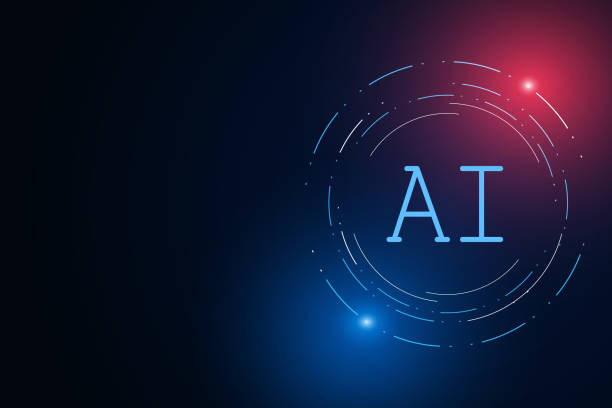What is Artificial Intelligence and What are its Applications?
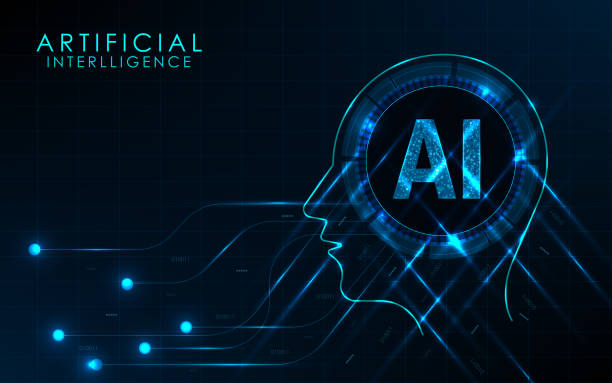
#Artificial_Intelligence (AI) is a branch of computer science that aims to design and build machines capable of performing tasks that typically require human intelligence.
These tasks include learning, problem-solving, pattern recognition, natural language understanding, and decision-making.
Artificial intelligence is rapidly advancing and has found widespread applications in various fields such as medicine, finance, education, and industry.
For example, in medicine, AI can help diagnose diseases, design new drugs, and provide personalized care.
In the financial market, AI can help predict market trends, manage risk, and prevent fraud.
In education, AI can help provide personalized instruction, assess student performance, and offer automated feedback.
In industry, AI can help improve efficiency, reduce costs, and enhance safety.
Artificial intelligence is broadly divided into two categories: Narrow AI and General AI.
Narrow AI is designed to perform a specific task, such as playing chess or facial recognition.
General AI is capable of performing any task that a human can.
The development of General AI is still in its early stages, but its potential to change the world is immense.
Artificial intelligence can help solve many of humanity’s great challenges such as climate change, poverty, and disease.
However, the development of AI also brings challenges, such as concerns about job displacement and the misuse of this technology.
Does your company website perform as befits your brand? In today’s competitive world, your website is your most important online tool. Rasaweb, specializing in professional corporate website design, helps you to:
✅ Gain customer credibility and trust
✅ Convert website visitors into customers
⚡ Get a free consultation!
Different Types of Machine Learning Algorithms
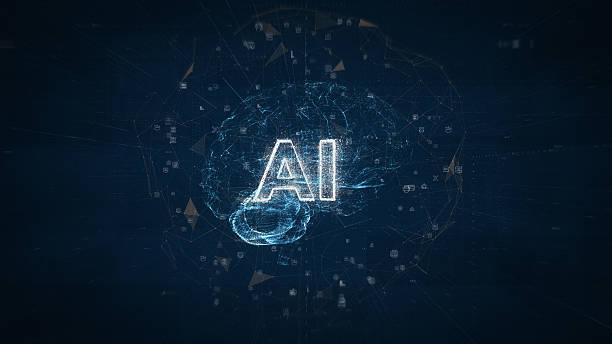
#Machine_Learning is an important sub-branch of artificial intelligence that enables machines to learn from data without explicit programming.
There are various machine learning algorithms, each suitable for a specific type of problem.
These algorithms are generally divided into three categories: supervised learning, unsupervised learning, and reinforcement learning.
Supervised learning requires a set of labeled data, where each input data is associated with an expected output.
The algorithm learns how to map inputs to outputs using this data.
Examples of supervised learning algorithms include linear regression, logistic regression, Support Vector Machines (SVMs), and neural networks.
Unsupervised learning works with unlabeled data, and its goal is to find patterns and structures within the data.
Examples of unsupervised learning algorithms include k-means clustering, Principal Component Analysis (PCA), and hierarchical clustering.
Reinforcement learning allows an agent to learn in an environment by performing actions and receiving rewards or penalties, to find the best strategy to achieve a specific goal.
Examples of reinforcement learning algorithms include Q-learning and deep reinforcement learning.
This type of learning is widely used in robotics and games.
Choosing the appropriate machine learning algorithm depends on the type of problem, the volume of data, and the required accuracy.
How Do Deep Neural Networks Work?

#Deep_Neural_Networks (DNNs) are a type of machine learning algorithm inspired by the structure of the human brain.
They consist of multiple layers of interconnected nodes (neurons) that process and transmit information.
Deep neural networks are capable of learning complex patterns in data and have applications in various fields such as image recognition, natural language processing, and machine translation.
Each neuron in a deep neural network receives an input, multiplies it by a weight, and then applies an activation function to it.
The output of this function is sent as input to the neurons in the next layer.
Weights and activation functions are adjusted during the learning process so that the network can produce the desired outputs.
Deep neural networks typically consist of input layers, hidden layers, and an output layer.
The input layer receives the input data, the hidden layers process the information, and the output layer provides the results.
The number of hidden layers and the number of neurons in each layer can vary depending on the complexity of the problem.
One of the main challenges in training deep neural networks is the vanishing gradient problem.
This problem occurs when gradients become very small across deep layers of the network, causing learning to proceed slowly.
To solve this problem, various methods are used, such as employing appropriate activation functions, using normalization techniques, and utilizing advanced network architectures.
| Name | Description |
|---|---|
| Feedforward Neural Network | The simplest type of neural network; information moves in one direction. |
| Recurrent Neural Network | Suitable for processing sequential data like text and speech. |
| Convolutional Neural Network | Highly effective for image and video recognition. |
Natural Language Processing (NLP) and its Applications

#Natural_Language_Processing (NLP) is a branch of artificial intelligence that enables machines to understand and generate human language.
NLP has applications in various fields such as machine translation, text summarization, sentiment analysis, and question answering.
One of the main challenges in NLP is language ambiguity.
Human language is often ambiguous, and a single sentence can have multiple meanings.
NLP uses various methods such as syntactic analysis, semantic analysis, and language modeling to solve this problem.
Syntactic analysis deals with the grammatical structure of sentences and determines the relationships between words.
Semantic analysis deals with the meaning of words and sentences and attempts to understand the overall concept of the text.
Language modeling uses linguistic data to predict the probability of a sequence of words occurring.
NLP is currently used in many applications.
For example, machine translation systems like Google Translate use NLP to translate text from one language to another.
Text summarization systems use NLP to summarize articles and documents.
Sentiment analysis systems use NLP to determine people’s attitudes and emotions towards a specific topic.
Chatbots use NLP to answer user questions and provide support.
Does your current website adequately represent your brand’s credibility? Or does it scare away potential customers?
Rasaweb, with years of experience in professional corporate website design, is your comprehensive solution.
✅ A modern, beautiful website tailored to your brand identity
✅ Significant increase in lead generation and new customers
⚡ Contact Rasaweb now for a free corporate website design consultation!
How Do Robotics and Artificial Intelligence Interact?

#Robotics and #Artificial_Intelligence are two related fields that are increasingly interacting with each other.
Robotics deals with the design, construction, operation, and application of robots.
Artificial intelligence enables machines to perform tasks that typically require human intelligence.
The combination of these two fields leads to the creation of intelligent robots capable of performing more complex tasks.
Intelligent robots can use sensors to collect information from their surroundings, use artificial intelligence to process this information, and use actuators to perform actions in the environment.
For example, an intelligent robot can be used in a factory to perform repetitive and dangerous tasks.
An intelligent robot can be used in a hospital to help care for patients.
An intelligent robot can be used in a home to help with daily tasks.
Artificial intelligence plays an important role in the development of intelligent robots.
Machine learning algorithms enable robots to learn from their experiences and improve their performance.
Computer vision algorithms enable robots to see and understand their surroundings.
Planning algorithms enable robots to plan to achieve their goals.
Control algorithms enable robots to control their movements.
The combination of robotics and artificial intelligence has great potential to improve human lives.
However, the development of this technology also brings challenges, such as concerns about job displacement and the misuse of this technology.
Current Challenges and Limitations of Artificial Intelligence
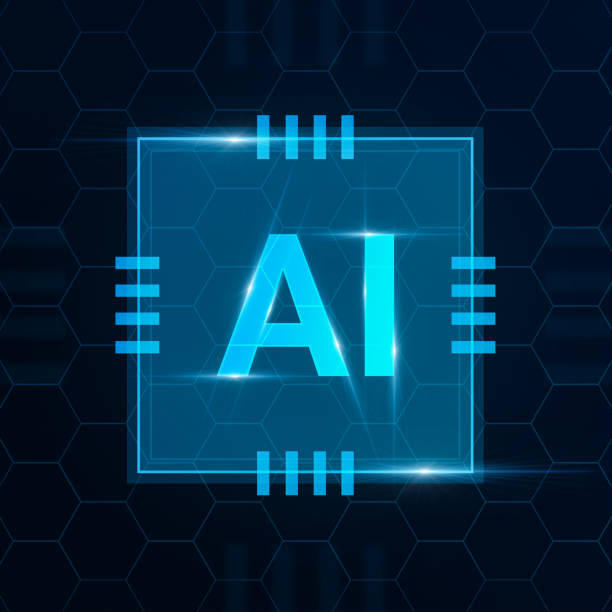
Although #Artificial_Intelligence has made significant progress, it still faces many challenges and limitations.
One of the main challenges is the need for large amounts of data to train machine learning algorithms.
Machine learning algorithms typically require a large volume of labeled data to learn complex patterns.
Collecting and labeling this data can be costly and time-consuming.
Another challenge is the problem of generalizability.
Machine learning algorithms may perform well on data they have been trained on, but perform poorly on new and unfamiliar data.
This problem occurs because algorithms may become dependent on specific patterns in the training data that are not present in new data.
One of the current limitations of artificial intelligence is the inability to understand and reason about abstract concepts.
AI generally performs well in specific tasks that rely on data and defined patterns, but struggles with understanding and reasoning about abstract concepts such as ethics, justice, and beauty.
Furthermore, there are concerns about bias in AI algorithms.
If training data contains bias, machine learning algorithms will also learn these biases and reflect them in their outputs.
This can lead to unfair and discriminatory decisions.
What Will Be the Future of Artificial Intelligence?

The #Future_of_Artificial_Intelligence looks very bright.
With continuous advancements in machine learning algorithms, hardware, and data, AI will increasingly permeate our lives.
AI is expected to bring fundamental transformations in various fields such as healthcare, education, transportation, and manufacturing.
In the future, we will see the development of smarter robots capable of performing more complex tasks.
These robots can work in dangerous and inaccessible environments for humans, assist in caring for the elderly and disabled, and help humans with repetitive and tedious tasks.
Additionally, AI is expected to play a significant role in the development of autonomous systems.
Autonomous systems can help reduce traffic accidents, improve transportation efficiency, and reduce air pollution.
However, the development of artificial intelligence also brings challenges.
One of the main challenges is ensuring that AI is developed responsibly and ethically.
Laws and regulations must be established to prevent the misuse of this technology.
| Field | Applications |
|---|---|
| Healthcare | Disease diagnosis, drug design, personalized care |
| Education | Personalized learning, automated assessment, instant feedback |
| Transportation | Self-driving cars, traffic management, route optimization |
The Impact of Artificial Intelligence on Jobs and the Labor Market

#Artificial_Intelligence will have a profound impact on jobs and the labor market.
Some jobs will be automated and disappear, while new jobs requiring new skills will emerge.
It is expected that jobs involving repetitive and routine tasks will be most at risk of automation.
Jobs requiring creative, critical, and social skills are less at risk.
To prepare for the changes brought by artificial intelligence, it is necessary to keep our skills updated and learn new ones.
Skills such as critical thinking, problem-solving, creativity, and collaboration will become more important.
Furthermore, it is essential to value lifelong learning and always be ready to learn new things.
Governments and organizations also have an important role in helping individuals adapt to the changes brought by artificial intelligence.
Governments can provide training and retraining programs to help people learn new skills.
Organizations can offer their employees opportunities for learning and skill development.
Overall, the impact of artificial intelligence on jobs and the labor market depends on how we use this technology.
If we use AI correctly, we can increase productivity, improve the quality of life, and create new opportunities for everyone.
Did you know that a weak corporate website loses you many opportunities daily? Solve this problem forever with professional corporate website design by Rasaweb!
✅ Create a powerful and reliable image for your brand
✅ Targeted attraction of new customers and increased sales
⚡ [Get Free Website Design Consultation]
Ethical Considerations in the Development and Use of Artificial Intelligence
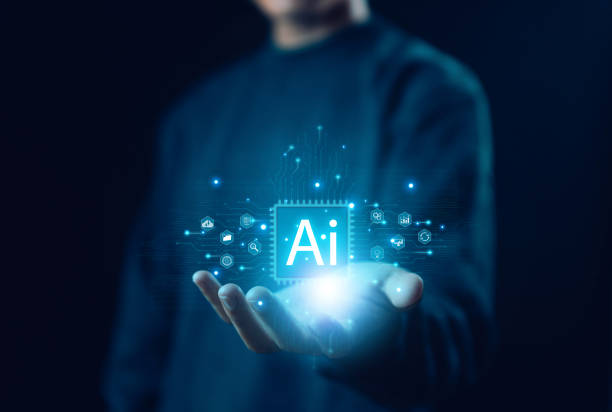
The development and use of #Artificial_Intelligence bring important ethical considerations.
One of the main considerations is ensuring that AI is used fairly and without discrimination.
AI algorithms may contain biases that lead to unfair and discriminatory decisions.
To prevent this problem, it is necessary to carefully examine training data and use algorithms that reduce bias.
Another ethical consideration is the issue of privacy.
AI systems typically require the collection and processing of large amounts of personal data.
It is necessary to protect individuals’ privacy and use their personal data responsibly.
Furthermore, there are concerns about accountability for decisions made by AI systems.
If an AI system makes a wrong decision, who is responsible? Laws and regulations must be established to determine accountability for decisions made by AI systems.
In general, the development and use of artificial intelligence must be carried out with ethical considerations.
It is necessary to respect human values and use this technology to improve everyone’s lives.
How Can One Learn AI and Become a Specialist in It?
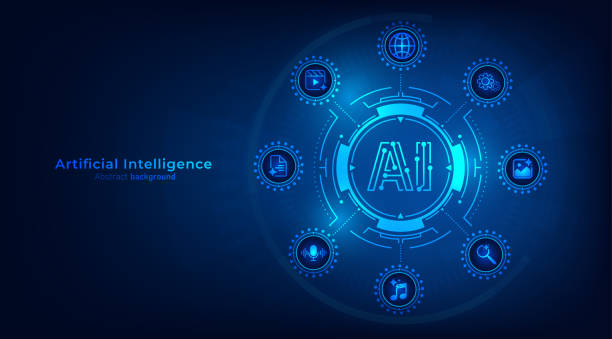
Learning #Artificial_Intelligence requires a combination of theoretical knowledge and practical skills.
Starting with basic concepts in mathematics (especially linear algebra and differential and integral calculus), statistics and probability, and computer science (especially algorithms and data structures) is essential.
There are many educational resources for learning artificial intelligence.
Online courses like Coursera, edX, and Udacity offer various courses in artificial intelligence.
Books and scientific articles are also valuable resources for deeper learning of concepts.
After learning the basic concepts, it is important to strengthen your practical skills by undertaking hands-on projects.
You can carry out various projects using AI tools and libraries such as TensorFlow, PyTorch, and Scikit-learn.
To specialize in a specific area of artificial intelligence, such as natural language processing or computer vision, it is necessary to study that area in depth and undertake more complex projects.
Additionally, participating in conferences and workshops can help you become familiar with the latest advancements in the field.
Frequently Asked Questions
| Question | Answer |
|---|---|
| What is Artificial Intelligence? | It is the simulation of human intelligence in machines programmed to think like humans and imitate their actions. |
| What are the main branches of Artificial Intelligence? | They include machine learning, deep learning, natural language processing, computer vision, and robotics. |
| What is Machine Learning? | It is a branch of AI that focuses on enabling systems to learn from data and identify patterns without explicit programming. |
| Mention examples of AI applications in our daily lives. | Voice assistants (like Siri and Alexa), recommendation systems in Netflix and Amazon, self-driving cars, and facial recognition software. |
| What is Deep Learning? | It is a subset of machine learning that uses artificial neural networks with multiple (deep) layers to process large amounts of data. |
| What is Natural Language Processing (NLP)? | It is a branch of AI that focuses on enabling computers to understand, interpret, and generate human language. |
| What are some ethical concerns related to Artificial Intelligence? | These include data bias, privacy, job displacement, and accountability in case of errors. |
| What are the main benefits of Artificial Intelligence? | Increased efficiency, improved decision-making, automation of repetitive tasks, and discovery of complex patterns in data. |
| How is Artificial Intelligence used in healthcare? | In disease diagnosis, drug discovery, medical image analysis, and personalized patient care. |
| How do you see the future of Artificial Intelligence? | It is expected to continue developing at a rapid pace, impacting all aspects of human life, from industry to education and entertainment. |
And other advertising services of Rasaweb Advertising Agency:
- Smart UI/UX: A creative platform to improve customer behavior analysis with attractive user interface design.
- Smart Brand Identity: A professional solution for campaign management, focusing on the use of real data.
- Smart Digital Advertising: Professional optimization to improve SEO ranking using custom programming.
- Smart Social Media: Transform click-through rates with the help of marketing automation.
- Smart Google Ads: Designed for businesses looking to manage campaigns through SEO-driven content strategy.
And over hundreds of other services in the field of internet advertising, advertising consultation, and organizational solutions.
Internet Advertising | Advertising Strategy | Advertorials
Resources
Comprehensive Guide to Artificial Intelligence on Digikala Mag
Latest Advancements and Applications of Artificial Intelligence on ISNA
Practical Applications of Artificial Intelligence on Virgool
The Future of Artificial Intelligence; Challenges and Opportunities on Zoomit
? For a brilliant presence in the digital world, Rasaweb Afarin Digital Marketing Agency, with its comprehensive services including corporate website design, paves the way for your business’s success.
📍 Tehran, Mirdamad Street, next to Bank Markazi, Kazeroon Janoubi Alley, Ramin Alley, No. 6


